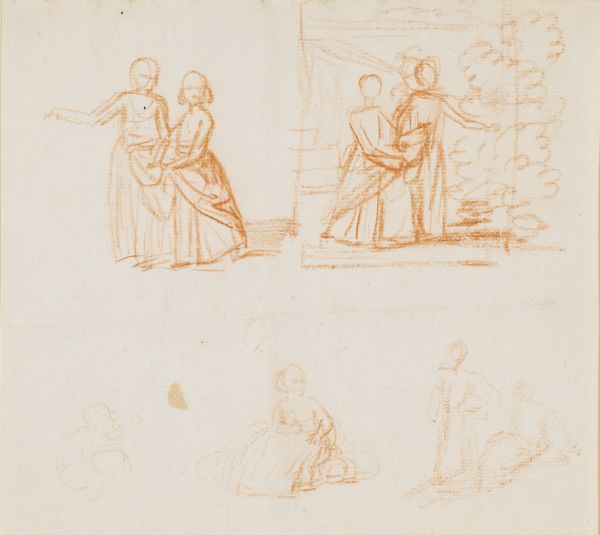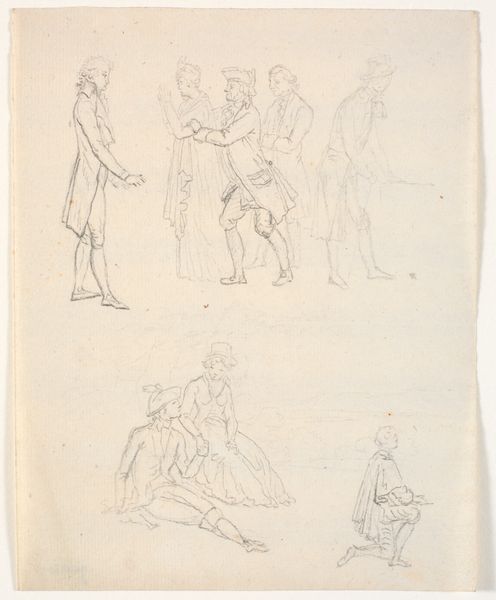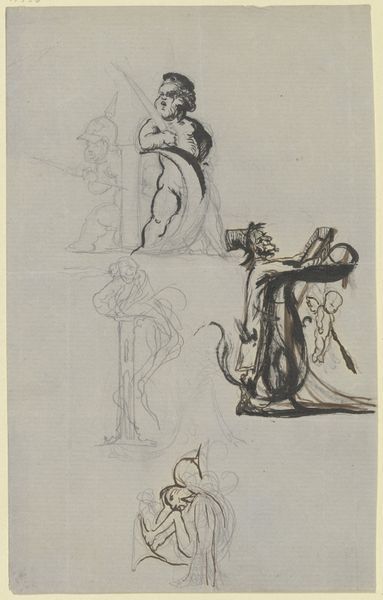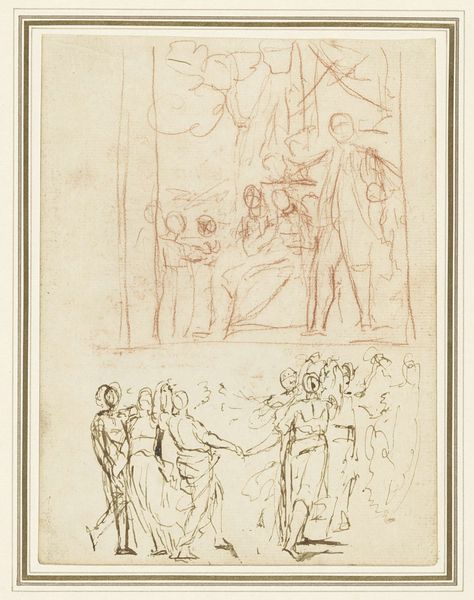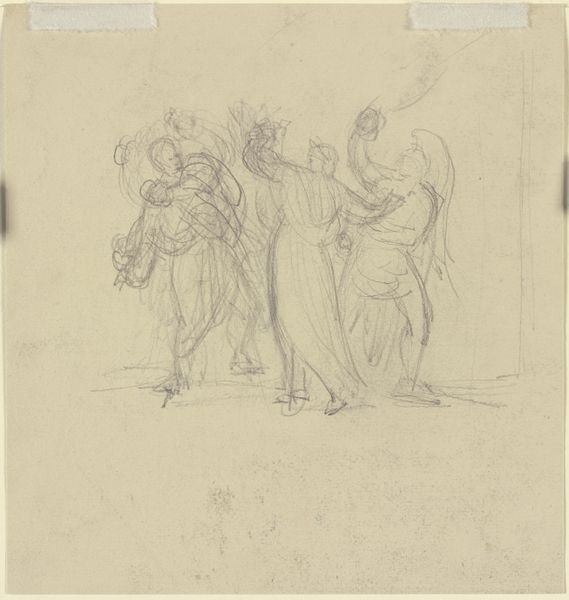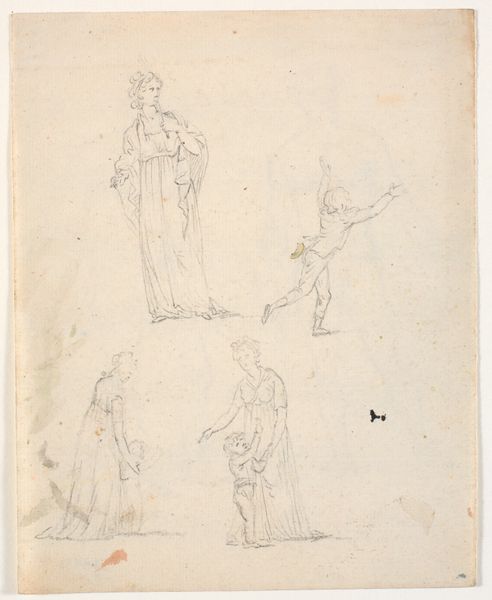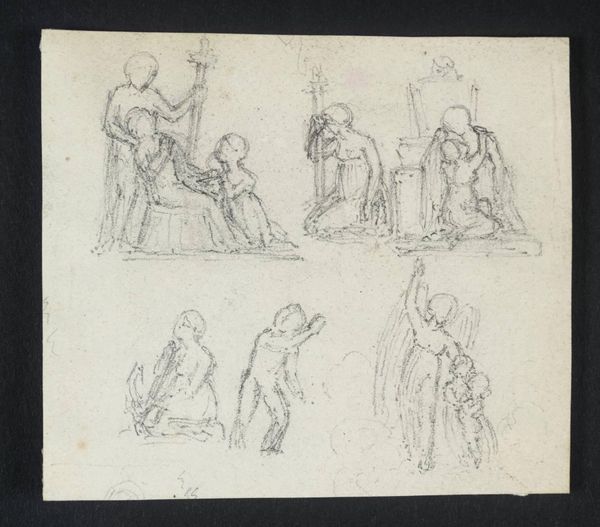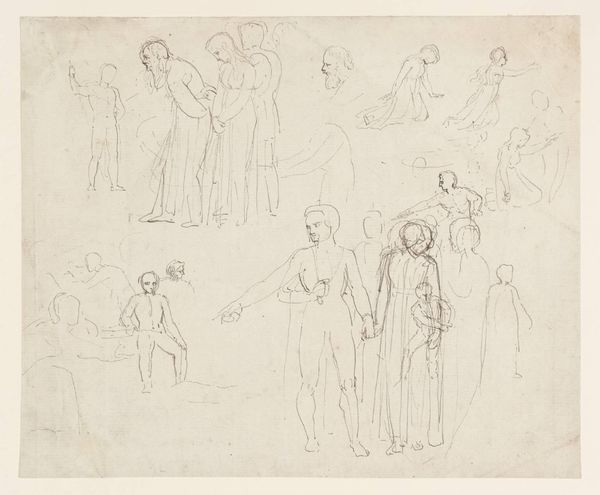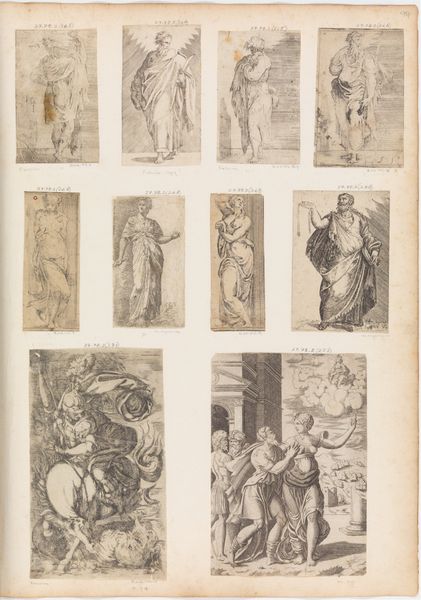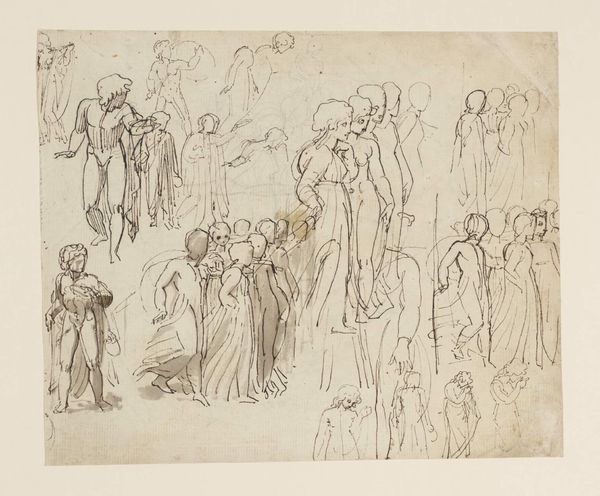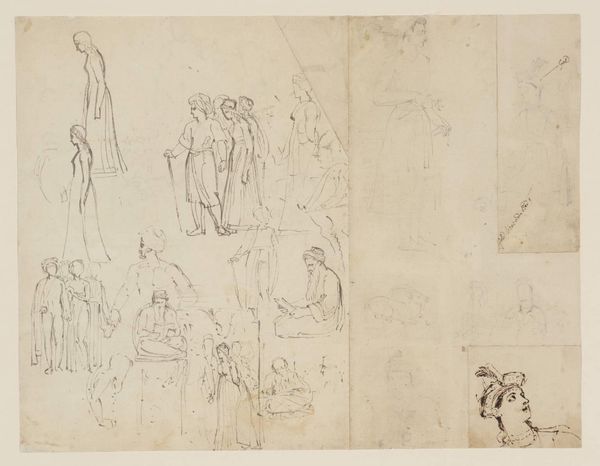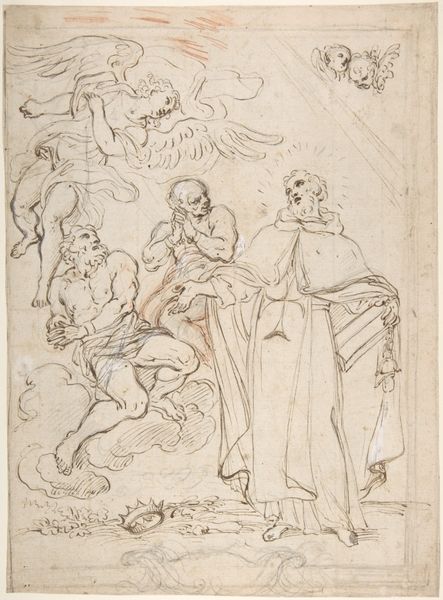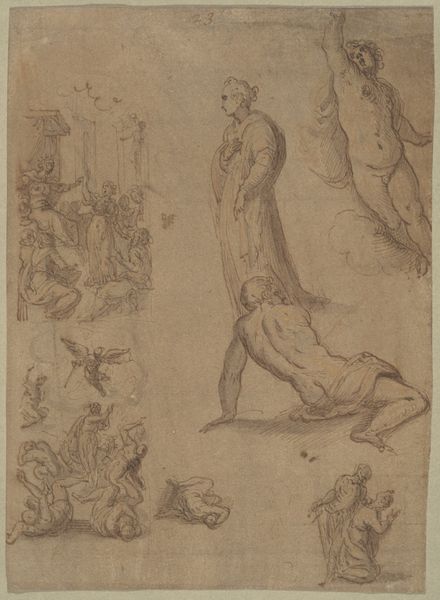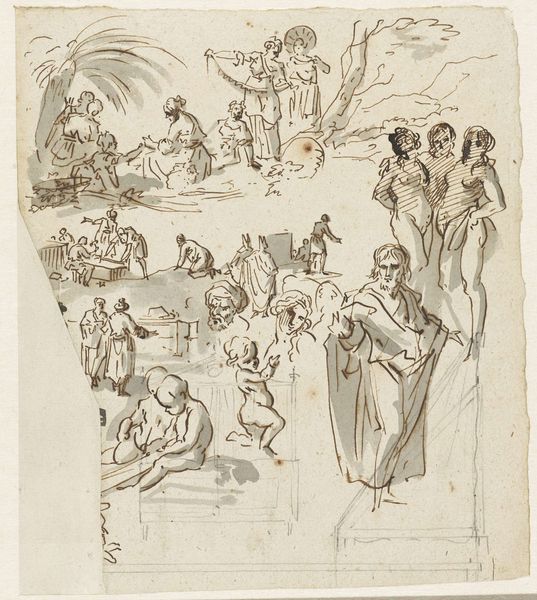
Fem figurskitser. F.o.t.v. et par (teaterscene?) f.n.t.h. en mand der trækker en hest 1746 - 1828
0:00
0:00
drawing, pencil
#
drawing
#
figuration
#
pencil
#
history-painting
#
academic-art
Dimensions: 200 mm (height) x 158 mm (width) (bladmaal)
Curator: This pencil drawing from between 1746 and 1828 by C.A. Lorentzen is entitled "Fem figurskitser. F.o.t.v. et par (teaterscene?) f.n.t.h. en mand der trækker en hest," which translates roughly to "Five figure sketches... a man pulling a horse". It's currently held at the SMK, the National Gallery of Denmark. Editor: My first thought is of captured moments, fleeting impressions from a stage performance, perhaps, with figures gracefully poised as if caught mid-aria. There is also something ghostly in the light pencil strokes. It is as though they are just memories floating about the page. Curator: It's interesting you say that. It really does conjure that sense of a palimpsest of the imagination. Lorentzen was a history painter, working firmly within the academic tradition, so his figures and their poses would draw from established historical narratives and conventions. I find the hint of theatricality intriguing. How might gender or class be playing out in the sketches of interactions and displays of authority on view here? Editor: Absolutely! The romantic sweep of gestures contrasted with what look like everyday figures—the guy leading the horse in particular gives me a strong sense of realism bumping up against neoclassical grandeur. Did you notice, also, how economically Lorentzen captures light? Look at the drape of clothing in the sketch on the upper left. The line work speaks volumes without ever filling the page. Curator: Precisely. Consider the cultural context of the late 18th century, with its emphasis on rationalism alongside growing revolutionary fervor. Lorentzen's sketches reveal an intersection between established artistic norms and emerging societal disruptions. How does this blend of historical reference points reflect contemporary tensions? Editor: Well, the fact that these are *sketches*, raw ideas still forming, gives the image a contemporary edge, actually. It opens possibilities of the unformed rather than a fixed narrative of power and history. This drawing lets the viewer in on the exciting act of the image being made, right? Which feels very… now. Curator: Yes, now *and* then, perhaps, through this fascinating dialogue between convention and invention. These figures, pulled from the annals of history, speak directly to our own. Editor: Well, that's one of the things that makes looking at art from so long ago exciting – when history doesn't just repeat, but it sort of…rhymes.
Comments
No comments
Be the first to comment and join the conversation on the ultimate creative platform.
